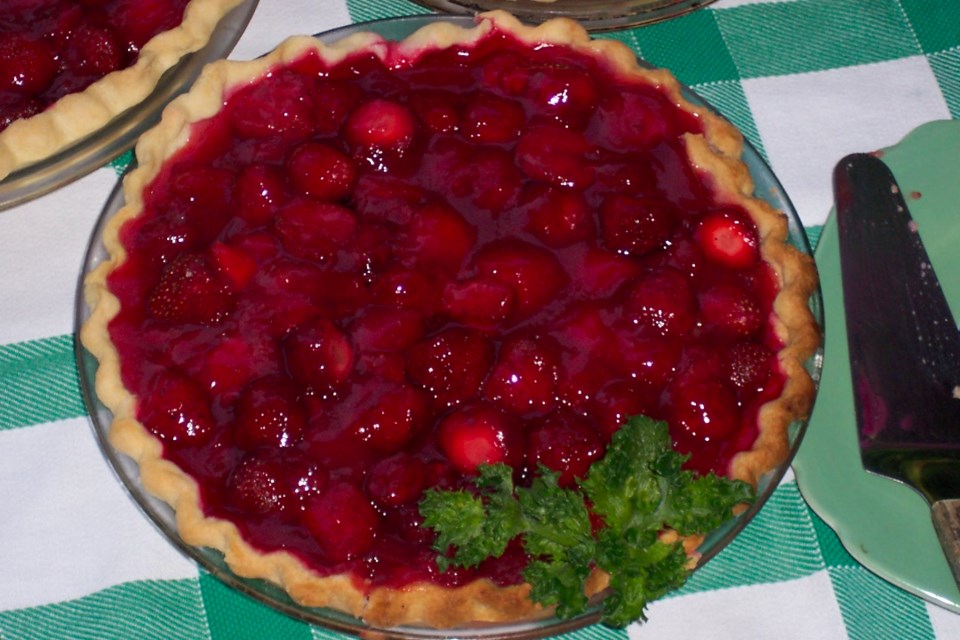This content was originally published by the Longmont Observer and is licensed under a Creative Commons license.
Written by Anne Quinn Corr
Dogs are good for many things but, lucky for me, not for helping in the garden. This week our puppy had an evening playdate with our neighbor Beth’s dog Olive. Beth and James had gone to water their plants at their plots at the community garden and I was the lucky one because when they returned they brought me a big handful of tiny, succulent strawberries, the first of their crop. Sweet.
Strawberries are from the genus Fragaria, aroma-therapeutic in itself. The name for the fruit is thought to derive from the Old English “streawberry” for the plant’s habit of spreading over the ground, though some believe that “straw” refers to the growers’ habit of using straw as a mulch to cushion the delicate fruit and keep it clean and healthy.
Known as a “false fruit” the strawberry grows from the base of the flower rather than from the ovary. The true fruits of the plant are what appear to be seeds on the surface of the berry. Botanists can argue these fine points, but the picker is not likely to worry as he presses a small, sun-warmed berry against the roof of his mouth and tastes an explosion of flavor unlike anything that shrink-wrapped giant berries shipped half way across the globe can deliver.
There are more than twenty species of strawberries, but only a few that are grown commercially. Fragaria vesca, the wood or Alpine berry is from Europe; F. virginiana is the eastern American wild strawberry and F. chiloensis is native to the Pacific coast and the variety that has been hybridized to produce our modern berries.
Strawberries were enjoyed through the ages as a wild jewel of the forest, expensive due to their scarcity. At one time in England a pound could fetch prices of ten pounds sterling and highwaymen preyed on delivery men. Efforts to cultivate them for the home garden were fruitful in the 1830’s outside Boston when the first seedlings were developed and their popularity spread rapidly.
If you do not grow your own, you can find them at the Longmont Farmers Market but go early because they sell out fast. In a good year, expect the season to last about three weeks, time enough for shortcake, pie and a batch of jam. Eating them au naturel is fine, too, or with a sprinkling of Balsamic vinegar to heighten the natural sweetness.
Fresh Strawberry Refrigerator Pie
- nine inch baked pie crust
- 1 quart strawberries
- three fourths cup sugar
- one half cup water
- dash of salt
- 2 heaping tablespoons cornstarch
- 4 tablespoons water
Optional Topping:
- 1 cup heavy cream
- 1 tablespoon sugar
Rinse the berries and remove the green stems. Place one fourth of them (1 cup) in a small saucepan with the first amount of sugar, the water and the salt. Cook the mixture until it boils, smashing the berries a bit with a wire potato masher. Allow the remaining berries to drain well. Combine the cornstarch with the second amount of water to make a slurry. Add the cornstarch slurry to the cooked berry mixture and cook until it becomes fairly clear (if the berries have been well-smashed it will not be totally clear).
Arrange the remaining whole berries in the pie shell and pour the hot glaze over them, spreading it to make sure they are all embedded. Refrigerate for at least 20 minutes, until the pie is set.
If you want to gild the lily with a topping, whip the heavy cream with the second amount of sugar until it is fairly stiff. Spread the cream over the chilled pie and garnish with whole berries if desired.
Anne Quinn Corr is a volunteer contributor to the Longmont Observer. Portions of this article previously appeared in the Centre Daily Times, a newspaper in State College, PA, and appear with the publisher’s permission.



